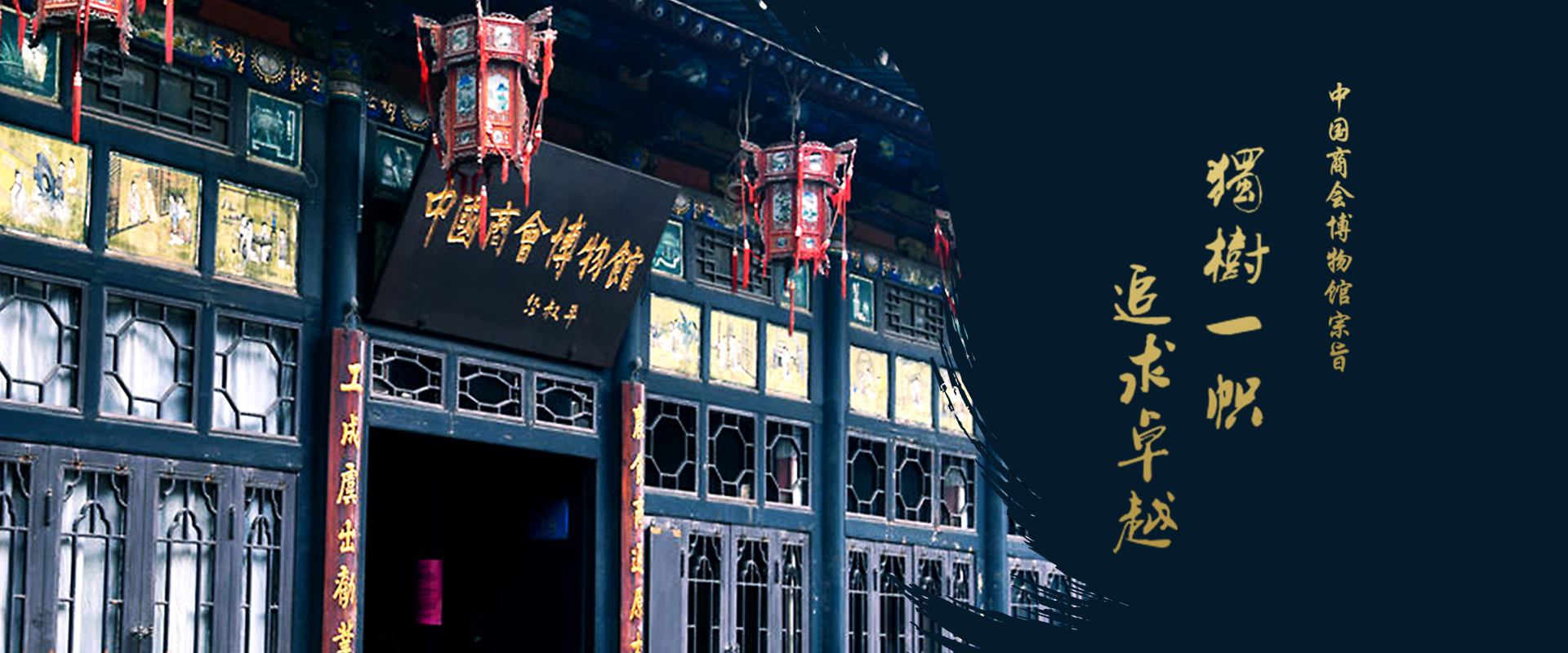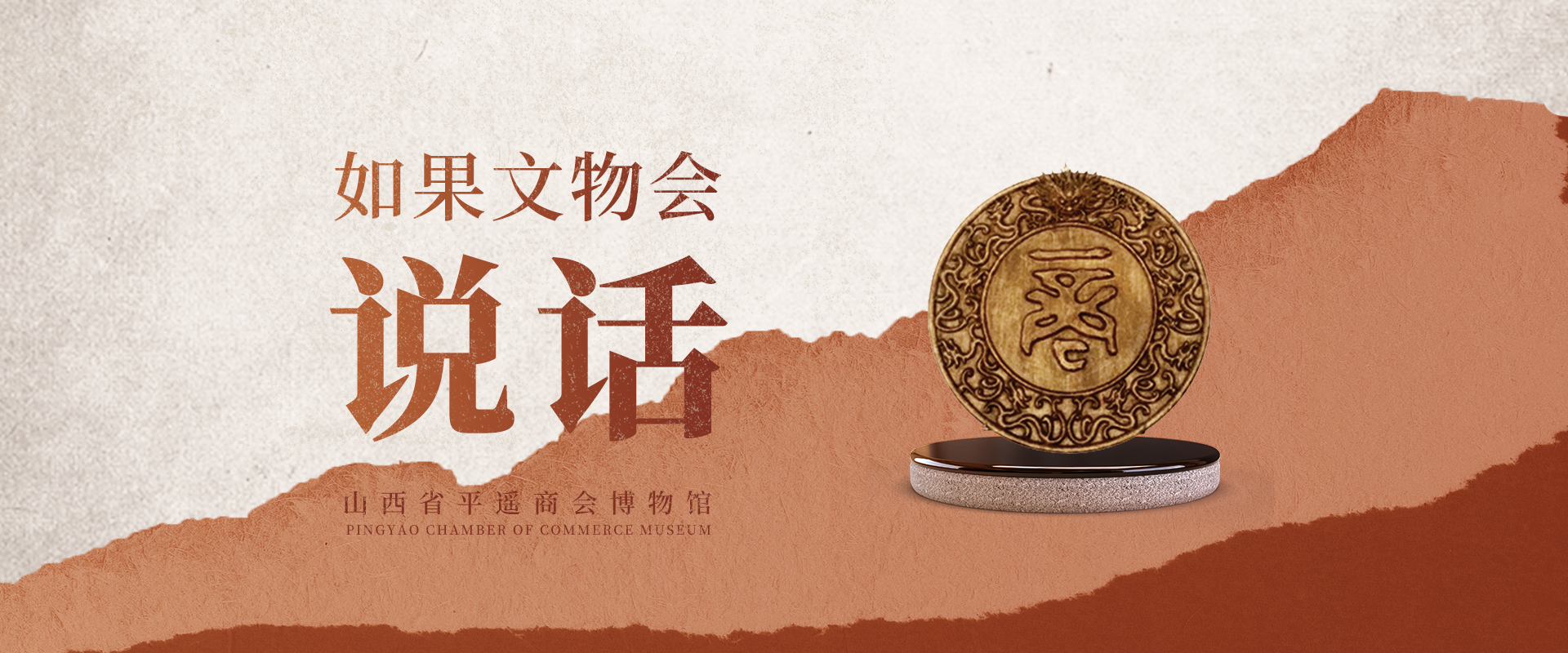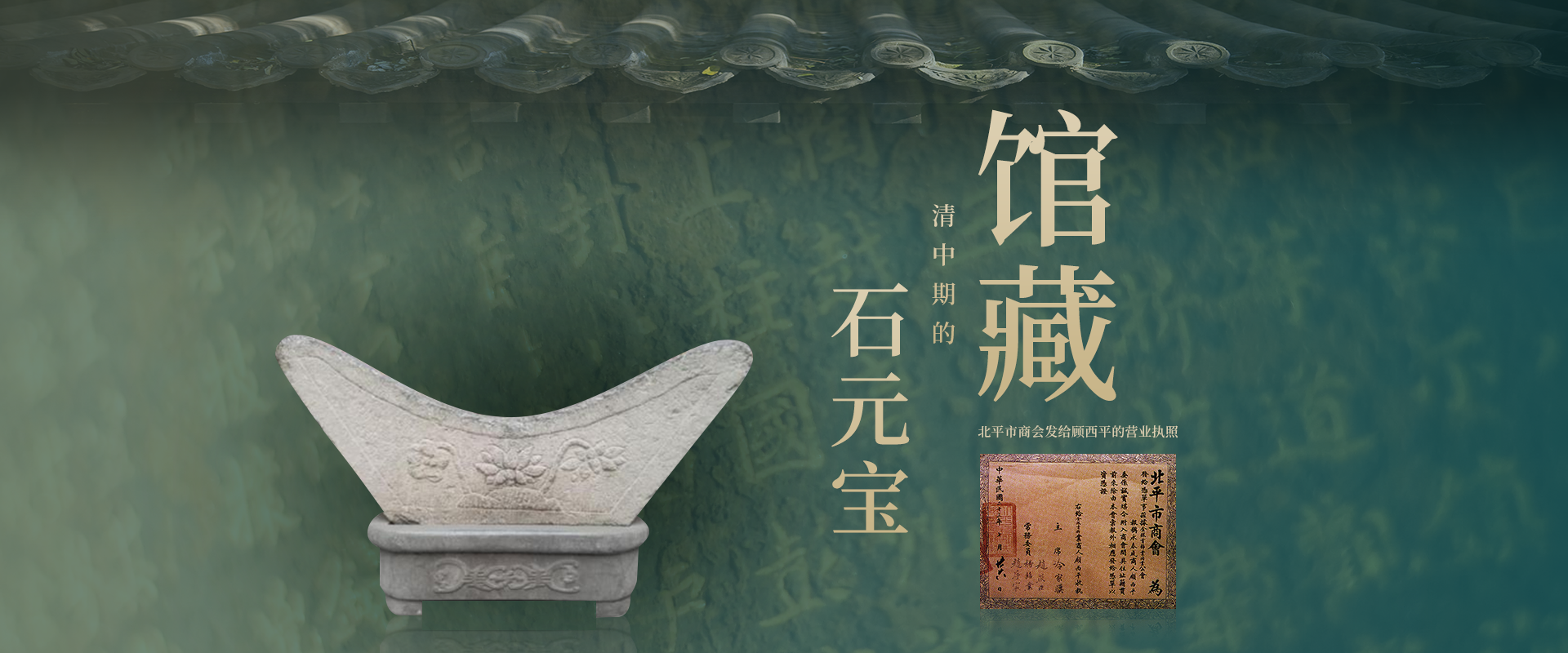
关于平遥商会博物馆
about the Museum
中国商会博物馆于2002年9月在平遥商会旧址上创办的商会博物馆。政协副主席、工商联原主席经叔平亲笔提写馆名。中国商会博物馆以翔实丰富的史料和实物,真实再现了商会激荡风云的历史和在推进近现代中国经济现代化、政治民主化、民族独立化的历史进程中所发挥的重大作用。并为规范市场经济、发展工商组织、锻造企业家队伍提供借鉴。
The China chamber of commerce museum was established in September 2002 on the site of pingyao chamber of commerce. CPPCC vice chairman, the former chairman of the federation of industry and commerce jingshuping autograph to write the name of the pavilion. With abundant historical materials and materials, the museum of the Chinese chamber of commerce reproduces the turbulent history of the chamber of commerce and the important role it played in promoting the economic modernization, political democratization and national independence of modern China. It also provides reference for standardizing market economy, developing industrial and commercial organization and forging entrepreneur team.
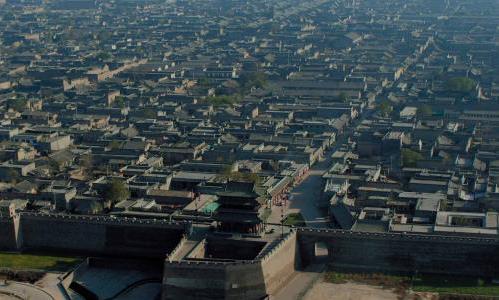
平遥古城位于山西省中部平遥县内,始建于西周宣王时期(公元前827年~公元前782年)。 山西平遥被称为“保存*为完好的四大古城”之一,也是中国仅有的以整座古城申报世界文化遗产获得成功的两座古城市之一。平遥古城是中国汉民族城市在明清时期的杰出范例,在中国历史的发展中,为人们展示了一幅非同寻常的汉族文化、社会、经济及宗教发展的完整画卷。
平遥旧称古陶,明朝初年,为防御外族南扰,始建城墙,洪武三年(公元1370年)在旧墙垣基础上重筑扩修,并*包砖。以后景泰、正德、嘉靖、隆庆和万历各代进行过十次的补修和修葺,更新城楼,增设敌台。康熙四十三年(公元1703年)因皇帝西巡路经平遥,而筑了四面大城楼,使城池更加壮观。平遥城墙总周长6163米,墙高约12米,把面积约2.25平方公里的平遥县城一隔为两个风格迥异的世界。城墙以内街道、铺面、市楼保留明清形制,城墙以外称新城。这是一座古代与现代建筑各成一体、交相辉映、令人遐思不已的佳地。2009年,平遥古城被世界纪录协会评为中国现存*完整的古代县城。2015年7月13日,平遥古城成为国家5A级旅游景点。
古城内共有景点22个。其中包括:中国商会博物馆,古城墙,县衙,日升昌票号,文庙,城隍庙,清虚观,二郎庙,百川通晋商博物馆,天吉祥博物馆,华北第一镖局,中国珍奇报纸陈列馆,平遥古民居博览苑,雷履泰故居,同兴公镖局博物馆,中国镖局博物馆,协同庆钱庄,蔚盛长票号,汇武林武术陈列馆等景点。城外还有双林寺,镇国寺。
主要景点:
Pingyao Ancient City, located in Pingyao County, central Shanxi Province, was first built during the Reign of King Xuan of the Western Zhou Dynasty (827-782 BC). Shanxi Pingyao is known as one of the "four well-preserved ancient cities", and it is also one of the only two ancient cities in China that successfully applied for ****** cultural heritage with the whole ancient city. Pingyao Ancient City is an outstanding example of Han nationality cities in China during the Ming and Qing dynasties. In the development of Chinese history, it presents a complete picture of the extraordinary cultural, social, economic and religious development of the Han nationality.
Pingyao old known as ancient pottery, the early Ming Dynasty, for the defense of foreign southern interference, built the city wall, Hongwu three years (AD 1370) in the old wall on the basis of rebuilding expansion repair, and ****** package brick. Later, jingtai, Zhengde, Jiajing, Longqing and Wanli dynasties carried out ten times of repair and repair, updated the tower, added the enemy. In the forty-third year of Kangxi (1703 AD), the city was even more magnificent because the emperor passed pingyao on his way west. Pingyao city wall has a total perimeter of 6163 meters and a wall height of about 12 meters, separating pingyao county with an area of about 2.25 square kilometers into two different styles ******. Streets, pavements and city buildings within the city wall remain in the shape of Ming and Qing dynasties, while outside the city wall is called new city. It is a wonderful place where ancient and modern architecture mingle and make people wonder. In 2009, Pingyao Ancient Town was named the most complete ancient county in China by ****** Records Association. On July 13, 2015, pingyao Ancient City became ******5A tourist attraction.
There are 22 scenic spots in the ancient city. These include: The museum of Chinese chamber of commerce, the ancient city walls, the county government, rishengchang Banks, Confucian temple, chenghuang temple, QingXuGuan, ErLangMiao, bacc the tong jin museum, museum of auspicious day, north China * * * * * * biaoju gallery, Chinese exotic newspaper pingyao ancient dwellings expo garden, LeiLvTai's former residence, with the male biaoju museum, the museum of Chinese companies, cooperative Banks, wei sheng long Banks, Collection wulin Martial arts exhibition hall and other attractions. There are shuanglin Temple and Zhenguo Temple outside the city.
Main attractions:
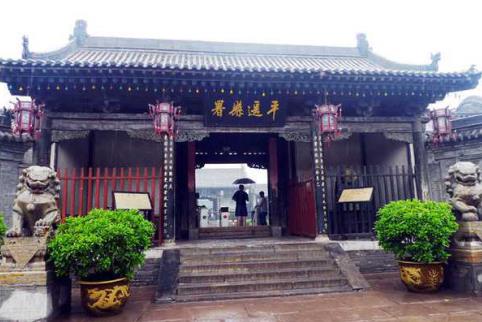
平遥县衙坐落于平遥古城中心,始建于北魏,定型于元明清,保存下来*早的建筑建于元至正六年(1346年),距今已有六百多年的历史,整座衙署坐北朝南,呈轴对称布局,南北轴线长二百余米,东西宽一百余米,占地26000余平方米。平遥县衙作为中国现有保存完整的四大古衙之一,也是全国现存规模*大的县衙。县衙整个建筑群主从有序,错落有致,结构合理,是一个有机的整体,2004年5月19日,第十一世班禅莅临县衙考察时欣然提词:“平遥县衙 古衙之*”。
Pingyao county government is located in the center of the ancient city of pingyao, was built in northern wei dynasty, finalize the design in the sui, preserved buildings built in early * * * yuan to is six years (1346 years), it has a history of more than six hundred years, the entire yamen sits, the axial symmetry layout, the north-south axis of more than two hundred meters long and more than one hundred meters wide, covers an area of more than 26000 square meters. Pingyao County Government, as one of the four intact ancient government in China, is also the extant ****** county government in China. On May 19, 2004, when the 11th Panchen Lama visited the county government, he said, "The government of Pingyao county is the ruler of the ancient government".
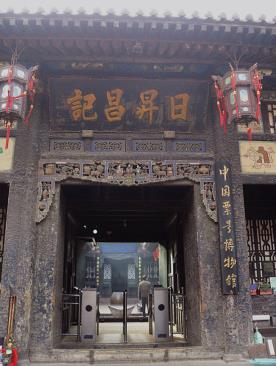
日升昌票号成立于清道光三年(1823年),由山西省平遥县西达蒲村富商李大金出资与总经理雷履泰共同创办。总号设于山西省平遥县城内繁华街市的西大街路南,占地面积1600多平方米,用地紧凑,功能分明,是中国民族银行业的先河,一度操纵十九世纪整个清王朝的经济命脉。其分号遍布全国30余个城市,远及欧美、东南亚等国,以“汇通天下”著称于世。
Rishengchang Bank was founded in the third year of Daoguang in Qing Dynasty (1823) by Li Dajin, a wealthy businessman from Xidapu Village, Pingyao County, Shanxi Province, and General manager Lei Lutai. The general number is located in pingyao County, Shanxi Province, in the south of the west Street of downtown downtown, covering an area of more than 1600 square meters, compact land, distinct functions, is the first of China's national banking, once controlled the economic lifeline of the entire Qing dynasty in the 19th century. Its semicolon covers more than 30 cities in China, as far as Europe, America, Southeast Asia and other countries. It is famous for "connecting the world".
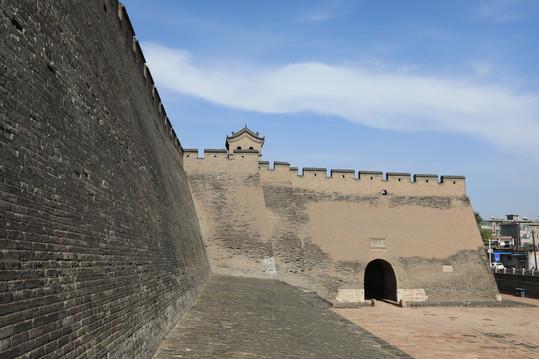
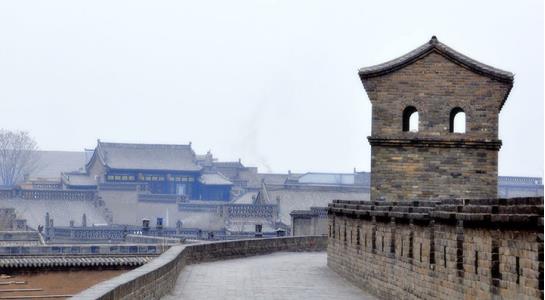
平遥史称"古陶"。春秋时置中都于此,汉置京陵县并筑京陵城。北魏始名平遥并筑城池。明洪武三年(1370)重筑时外壁砌砖。平遥城墙马面多,造型美观,防御设施齐备,为中国历代筑城之仅有,并以筑城手法古拙、工料精良堪称于世,是研究中国古代筑城之制的珍贵资料。1988年中华人民共和国国务院公布为全国重点文物保护单位。
Pingyao history is called "ancient pottery". The Spring and Autumn period in the capital in this, Han Jingling county and built jingling city. The northern Wei dynasty began to name Pingyao and built a city. Ming Hongwu three years (1370) rebuilt when the outer wall bricklaying. Pingyao has many walls, beautiful shapes, and well-equipped defense facilities. It is the only one built in all dynasties in China, and can be regarded as the world's most valuable material for studying the system of ancient Chinese city building. In 1988, The State Council of the People's Republic of China announced it as the national key cultural relics protection site.
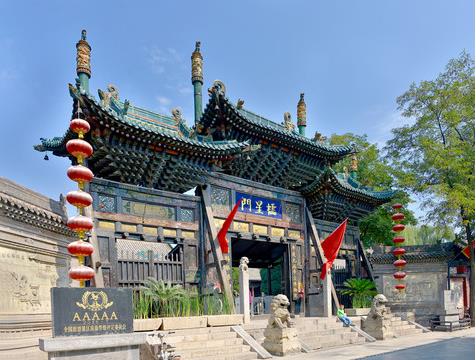
文庙始建年代不详,据殿内梁架题记载:大成殿重建于金大定三年(1103年)。现存建筑大成殿为金代原构,余皆明清所建。
庙坐北向南。总面积35811平方米,庙区占地8649.6平方米,建筑面积3472.3平方米。现存四进院落,中轴线上排列有:棂星门、大成门、大成殿、明伦堂、敬一亭、藏经阁等建筑。
大成殿为文庙主殿,面阔五间,进深五间,平面近方形,单檐歇山顶。建在高1米的砖砌台基上,前有宽广的月台,周围施以石栏板。前檐明次间用隔扇门,稍间置窗。檐下斗栱七铺作,双抄双下昂重栱偷心造。昂为批竹昂,耍头蚂蚱形。梁架分草栿和明栿两种,草栿隐在天花之下,天花板下露明处用明栿。梁架结构为十架椽,前后槽用搭牵乳栿联接,内柱之间,以复梁拼成的草栿承重,草栿以上,用四椽栿、平梁、叉手、侏儒柱、驼峰等层层支叠,梁枋断面高宽之比大多为三比二,基本采用了宋金时期作法。中央置藻井,用小型斗栱叠架而成,形制规整,工艺精巧。2001年6月25日被国务院公布为第五批全国重点文物保护单位。
It is not known when the temple was first built, but it is recorded that the Dacheng Hall was rebuilt in the third year of Jin Dading (1103). The existing building dacheng Hall for the jin generation of original structure, more than the Ming and Qing dynasties built.
The temple sits north to south. Total area 35811 square meters, temple area covers 8649.6 square meters, building area 3472.3 square meters. Existing four into the courtyard, the central axis is arranged: Lingxingmen, Dacheng gate, Dacheng Hall, Ming Lun Hall, Jingyi Pavilion, Sutra pavilion and other buildings.
Dacheng Hall is the main hall of the Confucian temple, five wide face, five deep, nearly square plane, single eaves xie peak. It is built on a 1 meter high brick platform with a broad platform in front and stone railings around it. Front eaves with a partition door, slightly between the window. Bracket - set seven shop, double copy double ang - set set. Ang for batch bamboo ang, playing head grasshopper shape. The beams are divided into Nanfu and Nanfu, nanfu under the ceiling and Nanfu under the ceiling. The beam frame structure consists of ten rafters, and the front and back traves are connected with traffu, while the internal columns are supported by fu fu, and above fu fu, four raffu, flat beam, fork, dwarf column, and hump are stacked one after another. The ratio of the height and width of the beams is mostly three to two, basically adopting the practice in Song and Jin dynasties. Central caisson, with small tou-kung stack frame, neat shape, exquisite technology. On June 25, 2001, it was announced by The State Council as the fifth batch of national key cultural relics protection units.
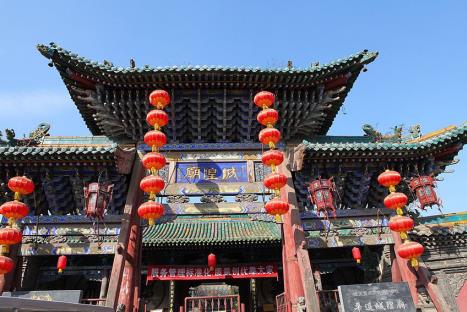
城隍庙,位于山西平遥城隍庙街中段。始建于明洪武初,成化中重修,清代郑板桥宰潍县,重修城隍庙并撰有《创修城隍庙碑记》。城隍是中国宗教文化中普遍崇祀的重要神只,大多由有功于地方民众的名臣英雄充当,是中国民间和道教信奉守护城池之神。
Chenghuang Temple is located in the middle of Chenghuang Temple Street in Pingyao, Shanxi Province. It was built in the early Hongwu period of the Ming Dynasty and rebuilt in Chenghua. Zheng Banqiao killed Weixian county in the Qing Dynasty and rebuilt the Chenghuang Temple and wrote the Inscription of Creating the Chenghuang Temple. City god is one of the most important gods worshiped in Chinese religious culture. Most of them were heroes of the local people. City god is believed by Chinese folk and Taoism to protect the city.
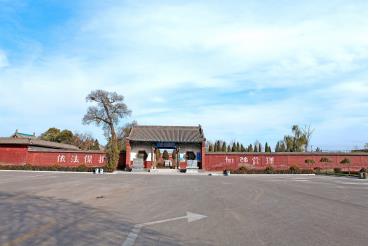
镇国寺,原名京城寺,创建于五代时北汉天会七年(公元963年)。京城寺的寺名,到明代嘉靖十九年(公元1540年)被“镇国寺”所取代。明、清时,寺庙倾颓,清代嘉庆二十年(公元1815年),才重修万佛殿,重修后的殿宇,仍保持了原来的风格。中国佛教寺院建筑精美、壮丽.不仅具有佛教的特征,还体现出中国古代传统建筑的特色.是中华文化宝藏的一部分。平遥镇国寺有着重要的历史文化价值以及丰富的旅游资源。
Zhenguo Temple, formerly known as Jingcheng Temple, was founded in 963, the 7th year of Tianhui in the Northern Han Dynasty during the Five Dynasties. The name of jingcheng Temple was replaced by "Zhenguo Temple" in the 19th year of The Reign of Emperor Jiajing of Ming Dynasty (1540). During the Ming and Qing dynasties, the temple collapsed. It was not until the 20th year of Jiaqing in the Qing Dynasty (1815 AD) that the Hall of Ten Thousand Buddhas was rebuilt, and the rebuilt temple still maintained its original style. The architecture of Chinese Buddhist temples is exquisite and magnificent. It not only has the characteristics of Buddhism, but also reflects the characteristics of ancient Chinese traditional architecture. It is part of the treasure of Chinese culture. Pingyao Zhenguo Temple has important historical and cultural value and rich tourism resources.
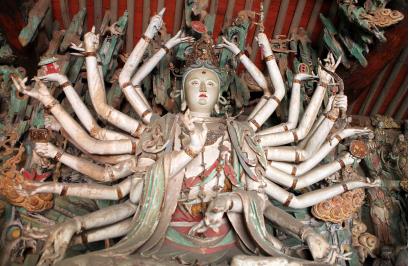
双林寺属全国重点文物保护单位,位于山西省平遥县西南六公里桥头村。原名“中都寺”,距今已有1400多年的历史了,至宋代取佛祖释迦牟尼涅磐之地“双林入灭”之意,更名为双林寺。寺中现存*古之碑为北宋大中祥符四年(1011)“姑姑之碑”。年代久远,字迹模糊,第二十行“重修寺于武平二年”尚可辨认。
Shuanglin Temple is a national key cultural relic protection site, located in Qiaotou village, six kilometers southwest of Pingyao County, Shanxi Province. Originally known as "Zhongdu Temple", it has a history of more than 1400 years. In the Song Dynasty, it was renamed As "Shuanglin Temple", meaning the place where Buddha Sakyamuni nirvana took place. The oldest extant stele in the temple is the Stele of Aunt in the fourth year of Dazhong Xiangfu (1011) of the Northern Song Dynasty. The age is long, the handwriting is vague, the twentieth line "rebuilding the temple in wuping two years" is still recognizable.
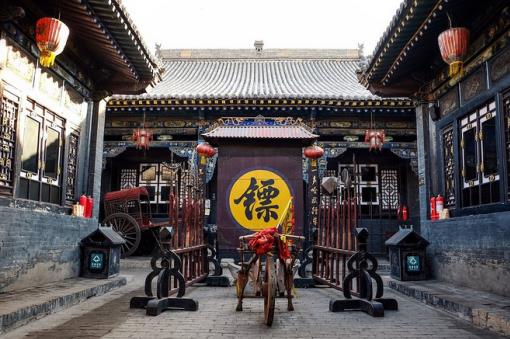
华北第一镖局,系指道光年间由王正清、戴二闾、左二把成立于平遥、祁县、文水等地的"同兴公"、"太汾"、"昌隆"三大镖局。而王、戴、左三人,一则武德昭著,名振大河上下;二则武艺高强。开设镖局,或现银运送,解缴、或货物转运,满足其时商业贸易实行现银结算的需要,因而,一度兴旺发达。票号诞生,镖局业务锐减。*兴盛期,为清末国内形势混乱之时。进入民国,各类*武装押运出现,镖局相继衰败,陆续退出历史舞台。
华北第一镖局博物馆,是全国第一家*展示镖局历史文化的博物馆,占地面积1000余平方米,共三进院落,前院为商业区,包括东西柜房、金库及柜头房,是镖局的业务场所;中院为办公区,由信房、账房及中厅三组建筑组成,是镖局的办公场所;后院为生活区,包括祖师堂,厨房及练武场,是镖师日常生活及练拳习武的地方。华北第一镖局博物馆*展示了镖局的历史沿革、组织机构和经营管理,为研究中国的经济发展提供了很好的历史借鉴。
North China first biaoju, refers to the daoguang years by Wang
Zhengqing, Dai Erlu, left two set up in Pingyao, Qi County, Wenshui and
other places of the "tongxing Gong", "Taifen", "Changlong" three biaoju.
And Wang, Dai, left three people, a wude notorious, famous vibration
river up and down; Second, high martial arts. Open biaoju, or silver
transport, settlement, or cargo transport, to meet the needs of the
commercial trade is now the implementation of silver settlement, thus,
once thriving. The birth of the number, biaoju business sharply reduced.
The most prosperous period, for the late Qing dynasty when the domestic
situation chaos. Into the Republic of China, all kinds of armed police
escort, biaoju has declined, have withdrawn from the stage of history.
North China first Biaoju Museum, is the first national
comprehensive display of biaoju history and culture museum, covers an
area of more than 1000 square meters, a total of three yards, the front
yard for the business district, including east and west cabinet room,
Treasury and cabinet head room, is biaoju business place; The middle
courtyard is the office area, composed of letter room, account room and
hall three groups of buildings, is the office of biaoju; The backyard is
the living area, including the patriarch hall, kitchen and martial arts
field, which is the place for biaoshi daily life and boxing practice.
The museum of the First Biaoju in North China comprehensively displays
the history, organization and management of biaoju, providing a good
historical reference for the study of China's economic development.
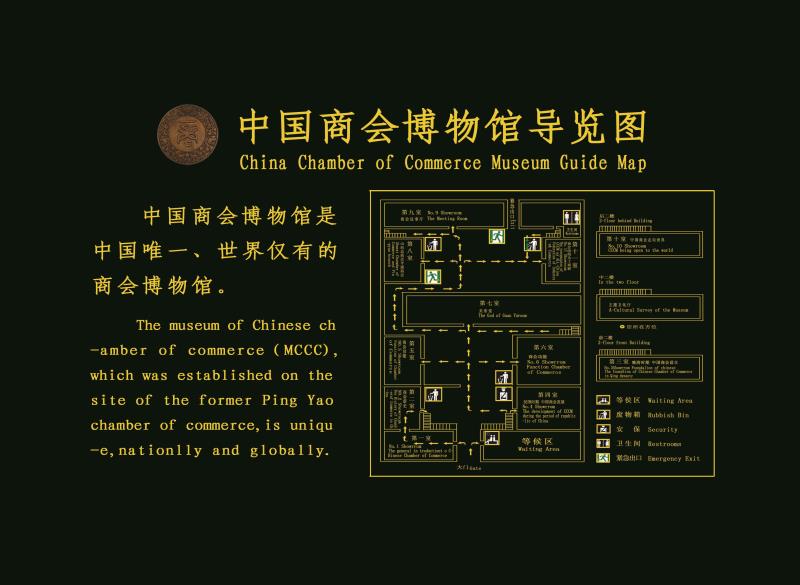
关于平遥商会博物馆
about the museum
中国商会博物馆于2002年9月在平遥商会旧址上创办的商会博物馆。政协副主席、工商联原主席经叔平亲笔提写馆名。中国商会博物馆以翔实丰富的史料和实物,真实再现了商会激荡风云的历史和在推进近现代中国经济现代化、政治民主化、民族独立化的历史进程中所发挥的重大作用。并为规范市场经济、发展工商组织、锻造企业家队伍提供借鉴。
The China chamber of commerce museum was established in September 2002 on the site of pingyao chamber of commerce. CPPCC vice chairman, the former chairman of the federation of industry and commerce jingshuping autograph to write the name of the pavilion. With abundant historical materials and materials, the museum of the Chinese chamber of commerce reproduces the turbulent history of the chamber of commerce and the important role it played in promoting the economic modernization, political democratization and national independence of modern China. It also provides reference for standardizing market economy, developing industrial and commercial organization and forging entrepreneur team.

平遥古城位于山西省中部平遥县内,始建于西周宣王时期(公元前827年~公元前782年)。 山西平遥被称为“保存*为完好的四大古城”之一,也是中国仅有的以整座古城申报世界文化遗产获得成功的两座古城市之一。平遥古城是中国汉民族城市在明清时期的杰出范例,在中国历史的发展中,为人们展示了一幅非同寻常的汉族文化、社会、经济及宗教发展的完整画卷。
平遥旧称古陶,明朝初年,为防御外族南扰,始建城墙,洪武三年(公元1370年)在旧墙垣基础上重筑扩修,并*包砖。以后景泰、正德、嘉靖、隆庆和万历各代进行过十次的补修和修葺,更新城楼,增设敌台。康熙四十三年(公元1703年)因皇帝西巡路经平遥,而筑了四面大城楼,使城池更加壮观。平遥城墙总周长6163米,墙高约12米,把面积约2.25平方公里的平遥县城一隔为两个风格迥异的世界。城墙以内街道、铺面、市楼保留明清形制,城墙以外称新城。这是一座古代与现代建筑各成一体、交相辉映、令人遐思不已的佳地。2009年,平遥古城被世界纪录协会评为中国现存*完整的古代县城。2015年7月13日,平遥古城成为国家5A级旅游景点。
古城内共有景点22个。其中包括:中国商会博物馆,古城墙,县衙,日升昌票号,文庙,城隍庙,清虚观,二郎庙,百川通晋商博物馆,天吉祥博物馆,华北第一镖局,中国珍奇报纸陈列馆,平遥古民居博览苑,雷履泰故居,同兴公镖局博物馆,中国镖局博物馆,协同庆钱庄,蔚盛长票号,汇武林武术陈列馆等景点。城外还有双林寺,镇国寺。
主要景点:
Pingyao Ancient City, located in Pingyao County, central Shanxi Province, was first built during the Reign of King Xuan of the Western Zhou Dynasty (827-782 BC). Shanxi Pingyao is known as one of the "four well-preserved ancient cities", and it is also one of the only two ancient cities in China that successfully applied for ****** cultural heritage with the whole ancient city. Pingyao Ancient City is an outstanding example of Han nationality cities in China during the Ming and Qing dynasties. In the development of Chinese history, it presents a complete picture of the extraordinary cultural, social, economic and religious development of the Han nationality.
Pingyao old known as ancient pottery, the early Ming Dynasty, for the defense of foreign southern interference, built the city wall, Hongwu three years (AD 1370) in the old wall on the basis of rebuilding expansion repair, and ****** package brick. Later, jingtai, Zhengde, Jiajing, Longqing and Wanli dynasties carried out ten times of repair and repair, updated the tower, added the enemy. In the forty-third year of Kangxi (1703 AD), the city was even more magnificent because the emperor passed pingyao on his way west. Pingyao city wall has a total perimeter of 6163 meters and a wall height of about 12 meters, separating pingyao county with an area of about 2.25 square kilometers into two different styles ******. Streets, pavements and city buildings within the city wall remain in the shape of Ming and Qing dynasties, while outside the city wall is called new city. It is a wonderful place where ancient and modern architecture mingle and make people wonder. In 2009, Pingyao Ancient Town was named the most complete ancient county in China by ****** Records Association. On July 13, 2015, pingyao Ancient City became ******5A tourist attraction.
There are 22 scenic spots in the ancient city. These include: The museum of Chinese chamber of commerce, the ancient city walls, the county government, rishengchang Banks, Confucian temple, chenghuang temple, QingXuGuan, ErLangMiao, bacc the tong jin museum, museum of auspicious day, north China * * * * * * biaoju gallery, Chinese exotic newspaper pingyao ancient dwellings expo garden, LeiLvTai's former residence, with the male biaoju museum, the museum of Chinese companies, cooperative Banks, wei sheng long Banks, Collection wulin Martial arts exhibition hall and other attractions. There are shuanglin Temple and Zhenguo Temple outside the city.
Main attractions:

平遥县衙坐落于平遥古城中心,始建于北魏,定型于元明清,保存下来*早的建筑建于元至正六年(1346年),距今已有六百多年的历史,整座衙署坐北朝南,呈轴对称布局,南北轴线长二百余米,东西宽一百余米,占地26000余平方米。平遥县衙作为中国现有保存完整的四大古衙之一,也是全国现存规模*大的县衙。县衙整个建筑群主从有序,错落有致,结构合理,是一个有机的整体,2004年5月19日,第十一世班禅莅临县衙考察时欣然提词:“平遥县衙 古衙之*”。
Pingyao county government is located in the center of the ancient city of pingyao, was built in northern wei dynasty, finalize the design in the sui, preserved buildings built in early * * * yuan to is six years (1346 years), it has a history of more than six hundred years, the entire yamen sits, the axial symmetry layout, the north-south axis of more than two hundred meters long and more than one hundred meters wide, covers an area of more than 26000 square meters. Pingyao County Government, as one of the four intact ancient government in China, is also the extant ****** county government in China. On May 19, 2004, when the 11th Panchen Lama visited the county government, he said, "The government of Pingyao county is the ruler of the ancient government".

日升昌票号成立于清道光三年(1823年),由山西省平遥县西达蒲村富商李大金出资与总经理雷履泰共同创办。总号设于山西省平遥县城内繁华街市的西大街路南,占地面积1600多平方米,用地紧凑,功能分明,是中国民族银行业的先河,一度操纵十九世纪整个清王朝的经济命脉。其分号遍布全国30余个城市,远及欧美、东南亚等国,以“汇通天下”著称于世。
Rishengchang Bank was founded in the third year of Daoguang in Qing Dynasty (1823) by Li Dajin, a wealthy businessman from Xidapu Village, Pingyao County, Shanxi Province, and General manager Lei Lutai. The general number is located in pingyao County, Shanxi Province, in the south of the west Street of downtown downtown, covering an area of more than 1600 square meters, compact land, distinct functions, is the first of China's national banking, once controlled the economic lifeline of the entire Qing dynasty in the 19th century. Its semicolon covers more than 30 cities in China, as far as Europe, America, Southeast Asia and other countries. It is famous for "connecting the world".


平遥史称"古陶"。春秋时置中都于此,汉置京陵县并筑京陵城。北魏始名平遥并筑城池。明洪武三年(1370)重筑时外壁砌砖。平遥城墙马面多,造型美观,防御设施齐备,为中国历代筑城之仅有,并以筑城手法古拙、工料精良堪称于世,是研究中国古代筑城之制的珍贵资料。1988年中华人民共和国国务院公布为全国重点文物保护单位。
Pingyao history is called "ancient pottery". The Spring and Autumn period in the capital in this, Han Jingling county and built jingling city. The northern Wei dynasty began to name Pingyao and built a city. Ming Hongwu three years (1370) rebuilt when the outer wall bricklaying. Pingyao has many walls, beautiful shapes, and well-equipped defense facilities. It is the only one built in all dynasties in China, and can be regarded as the world's most valuable material for studying the system of ancient Chinese city building. In 1988, The State Council of the People's Republic of China announced it as the national key cultural relics protection site.

文庙始建年代不详,据殿内梁架题记载:大成殿重建于金大定三年(1103年)。现存建筑大成殿为金代原构,余皆明清所建。
庙坐北向南。总面积35811平方米,庙区占地8649.6平方米,建筑面积3472.3平方米。现存四进院落,中轴线上排列有:棂星门、大成门、大成殿、明伦堂、敬一亭、藏经阁等建筑。
大成殿为文庙主殿,面阔五间,进深五间,平面近方形,单檐歇山顶。建在高1米的砖砌台基上,前有宽广的月台,周围施以石栏板。前檐明次间用隔扇门,稍间置窗。檐下斗栱七铺作,双抄双下昂重栱偷心造。昂为批竹昂,耍头蚂蚱形。梁架分草栿和明栿两种,草栿隐在天花之下,天花板下露明处用明栿。梁架结构为十架椽,前后槽用搭牵乳栿联接,内柱之间,以复梁拼成的草栿承重,草栿以上,用四椽栿、平梁、叉手、侏儒柱、驼峰等层层支叠,梁枋断面高宽之比大多为三比二,基本采用了宋金时期作法。中央置藻井,用小型斗栱叠架而成,形制规整,工艺精巧。2001年6月25日被国务院公布为第五批全国重点文物保护单位。
It is not known when the temple was first built, but it is recorded that the Dacheng Hall was rebuilt in the third year of Jin Dading (1103). The existing building dacheng Hall for the jin generation of original structure, more than the Ming and Qing dynasties built.
The temple sits north to south. Total area 35811 square meters, temple area covers 8649.6 square meters, building area 3472.3 square meters. Existing four into the courtyard, the central axis is arranged: Lingxingmen, Dacheng gate, Dacheng Hall, Ming Lun Hall, Jingyi Pavilion, Sutra pavilion and other buildings.
Dacheng Hall is the main hall of the Confucian temple, five wide face, five deep, nearly square plane, single eaves xie peak. It is built on a 1 meter high brick platform with a broad platform in front and stone railings around it. Front eaves with a partition door, slightly between the window. Bracket - set seven shop, double copy double ang - set set. Ang for batch bamboo ang, playing head grasshopper shape. The beams are divided into Nanfu and Nanfu, nanfu under the ceiling and Nanfu under the ceiling. The beam frame structure consists of ten rafters, and the front and back traves are connected with traffu, while the internal columns are supported by fu fu, and above fu fu, four raffu, flat beam, fork, dwarf column, and hump are stacked one after another. The ratio of the height and width of the beams is mostly three to two, basically adopting the practice in Song and Jin dynasties. Central caisson, with small tou-kung stack frame, neat shape, exquisite technology. On June 25, 2001, it was announced by The State Council as the fifth batch of national key cultural relics protection units.

城隍庙,位于山西平遥城隍庙街中段。始建于明洪武初,成化中重修,清代郑板桥宰潍县,重修城隍庙并撰有《创修城隍庙碑记》。城隍是中国宗教文化中普遍崇祀的重要神只,大多由有功于地方民众的名臣英雄充当,是中国民间和道教信奉守护城池之神。
Chenghuang Temple is located in the middle of Chenghuang Temple Street in Pingyao, Shanxi Province. It was built in the early Hongwu period of the Ming Dynasty and rebuilt in Chenghua. Zheng Banqiao killed Weixian county in the Qing Dynasty and rebuilt the Chenghuang Temple and wrote the Inscription of Creating the Chenghuang Temple. City god is one of the most important gods worshiped in Chinese religious culture. Most of them were heroes of the local people. City god is believed by Chinese folk and Taoism to protect the city.

镇国寺,原名京城寺,创建于五代时北汉天会七年(公元963年)。京城寺的寺名,到明代嘉靖十九年(公元1540年)被“镇国寺”所取代。明、清时,寺庙倾颓,清代嘉庆二十年(公元1815年),才重修万佛殿,重修后的殿宇,仍保持了原来的风格。中国佛教寺院建筑精美、壮丽.不仅具有佛教的特征,还体现出中国古代传统建筑的特色.是中华文化宝藏的一部分。平遥镇国寺有着重要的历史文化价值以及丰富的旅游资源。
Zhenguo Temple, formerly known as Jingcheng Temple, was founded in 963, the 7th year of Tianhui in the Northern Han Dynasty during the Five Dynasties. The name of jingcheng Temple was replaced by "Zhenguo Temple" in the 19th year of The Reign of Emperor Jiajing of Ming Dynasty (1540). During the Ming and Qing dynasties, the temple collapsed. It was not until the 20th year of Jiaqing in the Qing Dynasty (1815 AD) that the Hall of Ten Thousand Buddhas was rebuilt, and the rebuilt temple still maintained its original style. The architecture of Chinese Buddhist temples is exquisite and magnificent. It not only has the characteristics of Buddhism, but also reflects the characteristics of ancient Chinese traditional architecture. It is part of the treasure of Chinese culture. Pingyao Zhenguo Temple has important historical and cultural value and rich tourism resources.

双林寺属全国重点文物保护单位,位于山西省平遥县西南六公里桥头村。原名“中都寺”,距今已有1400多年的历史了,至宋代取佛祖释迦牟尼涅磐之地“双林入灭”之意,更名为双林寺。寺中现存*古之碑为北宋大中祥符四年(1011)“姑姑之碑”。年代久远,字迹模糊,第二十行“重修寺于武平二年”尚可辨认。
Shuanglin Temple is a national key cultural relic protection site, located in Qiaotou village, six kilometers southwest of Pingyao County, Shanxi Province. Originally known as "Zhongdu Temple", it has a history of more than 1400 years. In the Song Dynasty, it was renamed As "Shuanglin Temple", meaning the place where Buddha Sakyamuni nirvana took place. The oldest extant stele in the temple is the Stele of Aunt in the fourth year of Dazhong Xiangfu (1011) of the Northern Song Dynasty. The age is long, the handwriting is vague, the twentieth line "rebuilding the temple in wuping two years" is still recognizable.

华北第一镖局,系指道光年间由王正清、戴二闾、左二把成立于平遥、祁县、文水等地的"同兴公"、"太汾"、"昌隆"三大镖局。而王、戴、左三人,一则武德昭著,名振大河上下;二则武艺高强。开设镖局,或现银运送,解缴、或货物转运,满足其时商业贸易实行现银结算的需要,因而,一度兴旺发达。票号诞生,镖局业务锐减。*兴盛期,为清末国内形势混乱之时。进入民国,各类*武装押运出现,镖局相继衰败,陆续退出历史舞台。
华北第一镖局博物馆,是全国第一家*展示镖局历史文化的博物馆,占地面积1000余平方米,共三进院落,前院为商业区,包括东西柜房、金库及柜头房,是镖局的业务场所;中院为办公区,由信房、账房及中厅三组建筑组成,是镖局的办公场所;后院为生活区,包括祖师堂,厨房及练武场,是镖师日常生活及练拳习武的地方。华北第一镖局博物馆*展示了镖局的历史沿革、组织机构和经营管理,为研究中国的经济发展提供了很好的历史借鉴。
North China first biaoju, refers to the daoguang years by Wang
Zhengqing, Dai Erlu, left two set up in Pingyao, Qi County, Wenshui and
other places of the "tongxing Gong", "Taifen", "Changlong" three biaoju.
And Wang, Dai, left three people, a wude notorious, famous vibration
river up and down; Second, high martial arts. Open biaoju, or silver
transport, settlement, or cargo transport, to meet the needs of the
commercial trade is now the implementation of silver settlement, thus,
once thriving. The birth of the number, biaoju business sharply reduced.
The most prosperous period, for the late Qing dynasty when the domestic
situation chaos. Into the Republic of China, all kinds of armed police
escort, biaoju has declined, have withdrawn from the stage of history.
North China first Biaoju Museum, is the first national
comprehensive display of biaoju history and culture museum, covers an
area of more than 1000 square meters, a total of three yards, the front
yard for the business district, including east and west cabinet room,
Treasury and cabinet head room, is biaoju business place; The middle
courtyard is the office area, composed of letter room, account room and
hall three groups of buildings, is the office of biaoju; The backyard is
the living area, including the patriarch hall, kitchen and martial arts
field, which is the place for biaoshi daily life and boxing practice.
The museum of the First Biaoju in North China comprehensively displays
the history, organization and management of biaoju, providing a good
historical reference for the study of China's economic development.


版权所有:山西省平遥商会博物馆 地址:山西省晋中市平遥县平遥古城东大街15号 晋ICP备18005937号-1
